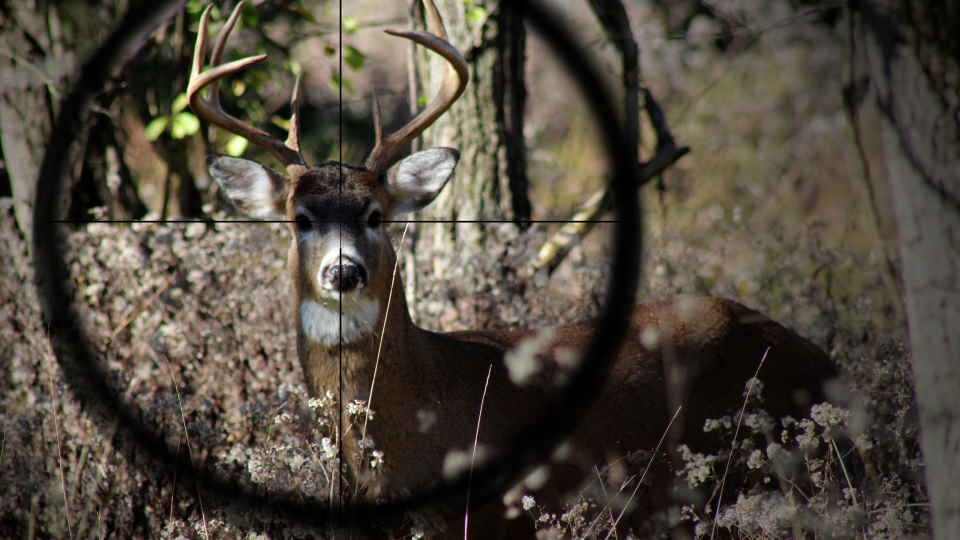Introduction
Background information has been provided, starting with certain characteristics of your prey, to eliminate all concerns about the wind affecting the movements of the deer, a classic myth that has puzzled and questioned many hunters and hunting enthusiasts.
In addition, you should take appropriate steps by examining why your deer hunt, which you know about its basic features, is sensitive to wind.
Background Knowledge about Deer
As one of the animal species where there are many different species and the most hunting is done, deer are known to be very timid creatures in their nature. So how well do we know our prey as a hunter beyond this knowledge? It is necessary to obtain some basic and specific information about our prey to give a more superficial but effective answer to this question.
Appearance: The eyes—one of the distinguishing and interesting features of many prey animals of deer—coincides with both sides of their heads. In this way, these animals, which have a wider perspective, have a vision that can extend up to 310 degrees.
Although they have certain distinctions and differences in appearance according to their species, the main appearance features of deer are that they have a diminutive tail and long ears accompanying their long and strong legs. In addition, many deer are known for their enormous and distinctively patterned antlers. Also, the antlers of some deer grow in the spring in a warm climate.
In terms of color, deer in light or dark brown tones can differ in appearance, as stated above. Moreover, some marks on young deer can be used against predators.
Senses: In addition to their strong instinct and attention, deer are very timid and on their toes, as mentioned above. That is, even the slightest movement can make them turn their attention to you and thus make them think there is a moment of danger, no matter how far away there is.
Although they can easily move their ears, many deer have almost perfect hearing. Thanks to their moving ears, they can direct their attention toward the direction of the sound and move their muscles in this direction. They can also detect many high-frequency sounds.
In addition, deer, which have a very strong sense of smell, frequently lick their noses to keep them moist, so they can easily follow the smell.
Habitats & Diet: 99% of deer are herbivorous in origin, and they usually feed on grass, sedges, bushes, or forbs. Along with this, they can sometimes feed on seeds and fruit residues spilled from the trees. Accordingly, they need plenty of minerals for their horns to grow.
Personality: As they are very social creatures and can have an interesting communication bond among themselves, deer are animals that can roam in groups depending on gender and even choose a male leader in this context. In addition, male deer can watch and protect females.
These creatures, which can communicate visually, vocally, and chemically, have a particular scent that emerges in certain parts of their bodies. They can even understand their social status and express their physical and sexual characteristics through this scent.
How Much Wind Is Too Much for Deer Hunting?

After getting to know the specific and useful basic features of your prey, let’s discuss how much and how little the wind will be during the hunt as the main topic. But before that, it will be much more understandable to briefly touch on why the wind is important during hunting.
Why Is the Wind Important While Deer Hunting?
It is said that an interesting feature of deer is that they do not move in the wind. In this direction, it is necessary to examine how important the wind is, especially for deer hunting, or why it is important.
We mentioned earlier that deer are pretty good olfactory receptors. Adhering to this, these animals, which rely on their noses in windy weather, tend to these perceptions rather than hearing or seeing perceptions during the wind. For this reason, a deer in motion changes its direction or even its way of going with the data it receives during the wind.
In this context, as they will be much more attentive during the wind, they will first stare at their nose, then the sound they will hear, then the image that catches their attention, and they will stay fully focused just before their next step.
The type of deer called the whitetail is highly dependent on weather conditions and is an extra sensitive species. Accordingly, even the slightest change in wind pressure can have a huge impact on your prey.
In addition, it has been proven by researchers that the wind differs according to the gender of the deer. Female deer move less in windy weather than males and travel short distances.
Depending on these, many experts stated that especially 5 to 15 mph wind speed is the most appropriate during hunting, and when this limit is exceeded, the hunting process becomes very difficult.
Conclusion
In a nutshell, background information has been given, beginning with specifics about your prey, to allay any worries about the wind influencing the deer’s movements. This common misconception has perplexed and confused many hunters and hunting aficionados.
In addition, you should investigate why your deer hunt, which you are aware of in terms of its fundamental components, is susceptible to wind. Ultimately, deer hunting under winding conditions exceeding 15 mph will be unsuccessful and dangerous.

One response to “How Much Wind Is Too Much for Deer Hunting?”
[…] Besides, speaking of hunting, beavers have a behavioral defense mechanism called the “dear enemy effect” against their enemies. According to this mechanism, beavers can identify between familiar and non-familiar scents, which are hostile or not, so you should pay attention to the wind as it carries the scent toward your prey or not. […]